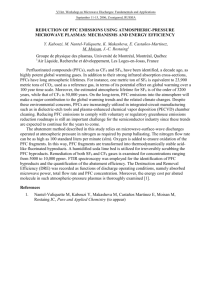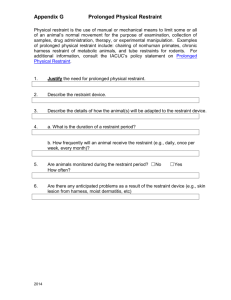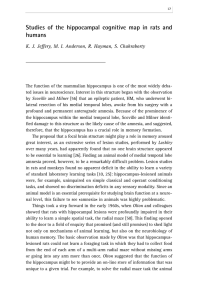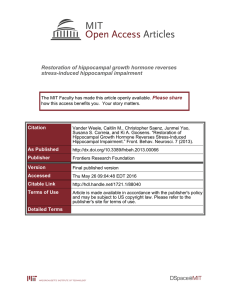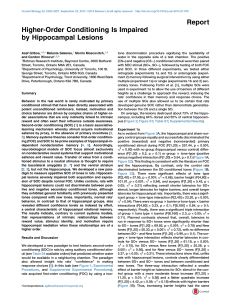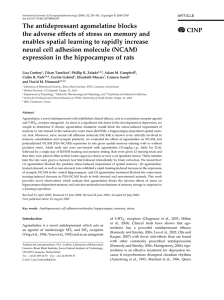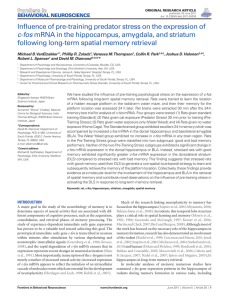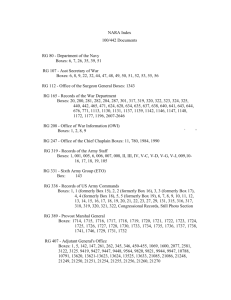Introduction to Neuroscience EXAM III Thursday, April 22
advertisement
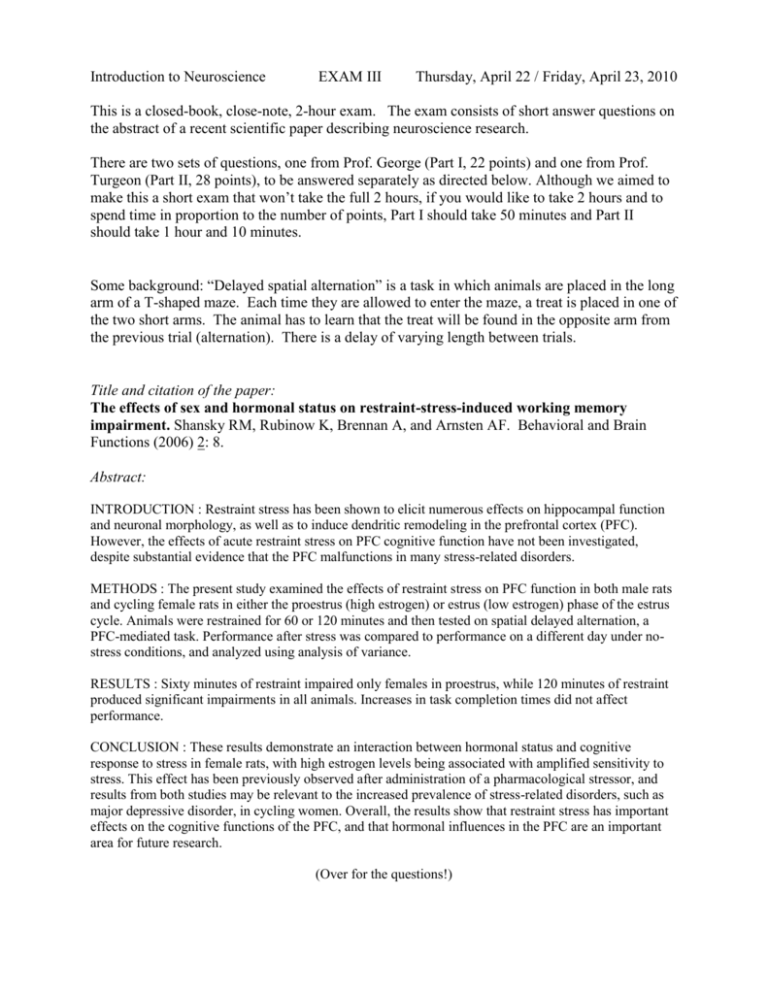
Introduction to Neuroscience EXAM III Thursday, April 22 / Friday, April 23, 2010 This is a closed-book, close-note, 2-hour exam. The exam consists of short answer questions on the abstract of a recent scientific paper describing neuroscience research. There are two sets of questions, one from Prof. George (Part I, 22 points) and one from Prof. Turgeon (Part II, 28 points), to be answered separately as directed below. Although we aimed to make this a short exam that won’t take the full 2 hours, if you would like to take 2 hours and to spend time in proportion to the number of points, Part I should take 50 minutes and Part II should take 1 hour and 10 minutes. Some background: “Delayed spatial alternation” is a task in which animals are placed in the long arm of a T-shaped maze. Each time they are allowed to enter the maze, a treat is placed in one of the two short arms. The animal has to learn that the treat will be found in the opposite arm from the previous trial (alternation). There is a delay of varying length between trials. Title and citation of the paper: The effects of sex and hormonal status on restraint-stress-induced working memory impairment. Shansky RM, Rubinow K, Brennan A, and Arnsten AF. Behavioral and Brain Functions (2006) 2: 8. Abstract: INTRODUCTION : Restraint stress has been shown to elicit numerous effects on hippocampal function and neuronal morphology, as well as to induce dendritic remodeling in the prefrontal cortex (PFC). However, the effects of acute restraint stress on PFC cognitive function have not been investigated, despite substantial evidence that the PFC malfunctions in many stress-related disorders. METHODS : The present study examined the effects of restraint stress on PFC function in both male rats and cycling female rats in either the proestrus (high estrogen) or estrus (low estrogen) phase of the estrus cycle. Animals were restrained for 60 or 120 minutes and then tested on spatial delayed alternation, a PFC-mediated task. Performance after stress was compared to performance on a different day under nostress conditions, and analyzed using analysis of variance. RESULTS : Sixty minutes of restraint impaired only females in proestrus, while 120 minutes of restraint produced significant impairments in all animals. Increases in task completion times did not affect performance. CONCLUSION : These results demonstrate an interaction between hormonal status and cognitive response to stress in female rats, with high estrogen levels being associated with amplified sensitivity to stress. This effect has been previously observed after administration of a pharmacological stressor, and results from both studies may be relevant to the increased prevalence of stress-related disorders, such as major depressive disorder, in cycling women. Overall, the results show that restraint stress has important effects on the cognitive functions of the PFC, and that hormonal influences in the PFC are an important area for future research. (Over for the questions!) Part I (22 points): Answer on lined paper provided. If you use more than 1 sheet, put your name on both sheets. (A) [3 points] The title of the abstract includes the phrase “working memory.” What is it about this study that makes it about working memory? [Suggested answer: 1-2 sentences] (B) [4 points] Although the behavioral task in this study is said to be “PFC-mediated,” other brain structures are also involved. Why is it plausible that the hippocampus may be involved in this task? [Suggested answer: 1-2 sentences] (C) [4 points] To study hippocampal involvement in spatial delayed alternation, you could record nerve impulses from single hippocampal neurons in behaving rats as they perform the task. What characteristic of the hippocampal neurons’ responses would you look for, i.e. what kind of stimuli would you seek to correlate with the neurons’ responses? [Suggested answer: 1 sentence or phrase] (D) [9 points] Suppose you are interested in finding out whether the neural basis of the kind of learning described in this abstract involves long-term potentiation (LTP). Suggest an experiment you could do to answer this question; explain how you would interpret the results. Be specific about the procedures you would use. (E) [Not about the abstract; 2 points] Define or describe EITHER Leptin OR Ghrelin in a phrase or sentence. Part II (28 points): Answer in an exam book 1. The authors argue that their data suggest an interaction between activational effects of hormones (E in particular) and the cognitive response to stress. A) Explain the difference between activational and organizational effects of gonadal hormones. [4 points] B) Design an experiment to test the hypothesis the organizational effects of gonadal hormones are required for the sexually differentiated responses seen here. Explain how you would interpret possible results of your experiment. [8 points] 2. The stress response involves a set of neuroendocrine responses. A) Explain the neuroendocrine response likely initiated by the restraint stress and design an experiment to test the hypothesis that this mechanism is involved in the effect of stress on cognitive performance. Explain how you would interpret possible results of your experiment. [8 points] B) As mentioned in Part 1 of the exam, this task may also involve the hippocampus. Given the literature on the effects of prenatal stress on behavior and the hippocampus, describe an experiment you might perform to investigate possible neural changes accompanying the behavioral effects of stress observed in the present experiment. Explain how you would interpret possible results of your experiment. [8 points]



